From its graceful, arching branches to its clusters of pretty purple flowers and yellow fruit, there is always something to admire about golden dewdrops (
Duranta erecta). While its bright green foliage and small purple flowers may have a delicate appearance, this heat-loving shrub thrives in both arid and humid regions throughout the southern half of the United States. For those of you who live in colder zones, it is also grown as an annual shrub in flower beds or in containers and brought indoors in winter.
Caution: While grown throughout the southeastern United States, this Caribbean native can become invasive in areas with hot, humid climates, so use caution when planting and keep its growth controlled by judicious pruning.
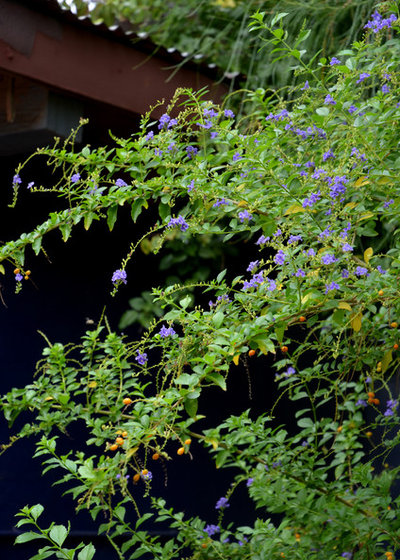
Noelle Johnson Landscape Consulting
Botanical name: Duranta erecta (syn.
Duranta repens)
Common names: Golden dewdrops, sky flower, pigeon berry
Origin: Native to the Caribbean, Central and South America, and Florida
Where it will grow: Hardy to 20 to 25 degrees Fahrenheit, or minus 3.9 to minus 6.7 degrees Celsius (USDA Zone 9; find your zone); can also be grown in zones 7 and below if treated as an annual or brought indoors in winter
Water requirement: Moderate; water deeply once a week in summer and twice a month the rest of the year
Light requirement: Full sun to filtered shade (avoid western exposure in low-desert gardens)
Mature size: 8 to 25 feet tall and 6 to 10 feet wide
Benefits and tolerances: Attracts bees, birds and butterflies
Seasonal interest: Flowers appear in spring through early fall; yellow-orange inedible fruit appears throughout the growing season
When to plant: Spring
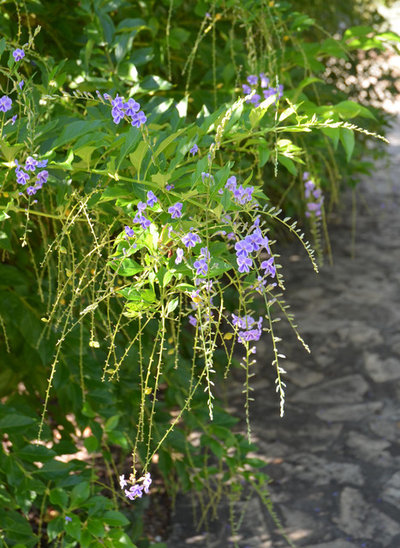
Noelle Johnson Landscape Consulting
Distinguishing traits. Golden dewdrops is most commonly grown as a large shrub, but can be trained as a small, arching tree by pruning the lower branches. The arching branches of golden dewdrops are covered in 1- to 3-inch-long bright green leaves that remain evergreen in frost-free climates and are deciduous in regions where temperatures dip below freezing.
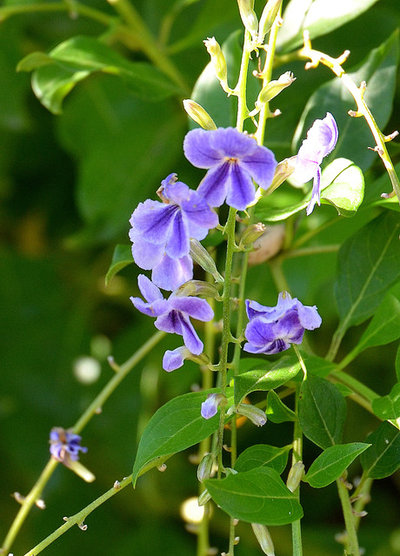
Noelle Johnson Landscape Consulting
With the arrival of spring and warm temperatures, clusters of five-petaled, white-edged purple flowers begin to appear. The half-inch-wide flowers continue to bloom through early fall and will appear all year long in areas untouched by freezing temperatures. In addition to the variety with light blue and purple flowers, golden dewdrops is available in other varieties, including ‘Sweet Memory’, which has dark purple flowers edged in white, and ‘Alba’, with all-white flowers.
Dark yellow, waxy berries appear along with flowers, and are eaten by certain bird species. While the berries add a decorative element to golden dewdrops, they are poisonous to humans.
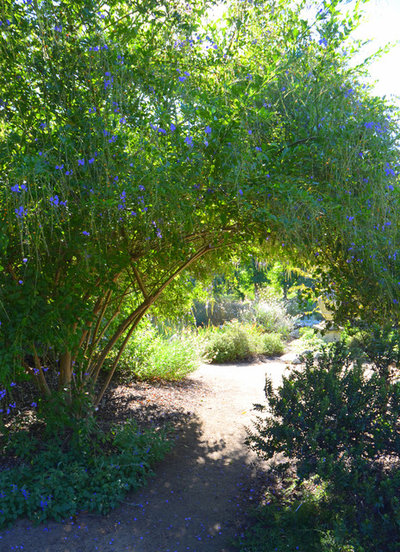
Noelle Johnson Landscape Consulting
How to use it. The versatility of this tropical shrub, coupled with its beauty, makes it a popular addition to the garden. Create a living archway over a pathway by pruning off lower branches and training the remaining branches that are allowed to grow taller. Use it as a foundation plant in the corner of the garden, or train it as a small tree where it can be viewed up close in a courtyard or patio.
Golden dewdrops softens the edges of buildings and can create a lovely backdrop for perennial beds, whether treated as an annual bedding plant or as a foundation plant in warmer climates. Surround it with flowering perennials such as angelita daisy (
Tetraneuris acaulis), coneflower (
Echinacea spp.), gaura (
Gaura lindheimeri), iris (
Iris spp.), Mexican honeysuckle (
Justicia spicigera), white or yellow lantana (
Lantana spp.), or
white lily of the Nile
(
Agapanthus africanus ‘Albus’).
This purple-flowering shrub’s large size can be restricted by growing it in a container, which is also useful for those who need to bring it indoors in winter.
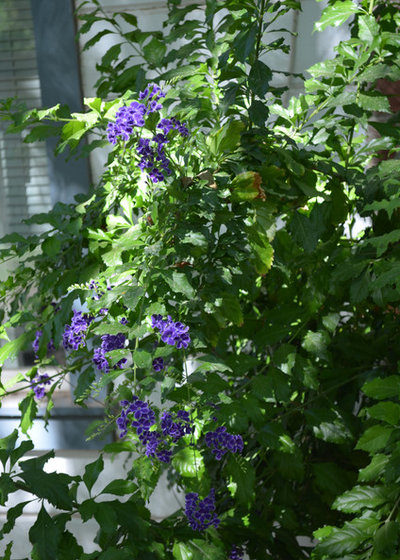
Noelle Johnson Landscape Consulting
Planting notes. Plant in well-drained soil in full sun or filtered shade. Fertilize in spring using a slow-release fertilizer. Prune as needed in spring and summer to control its size.





